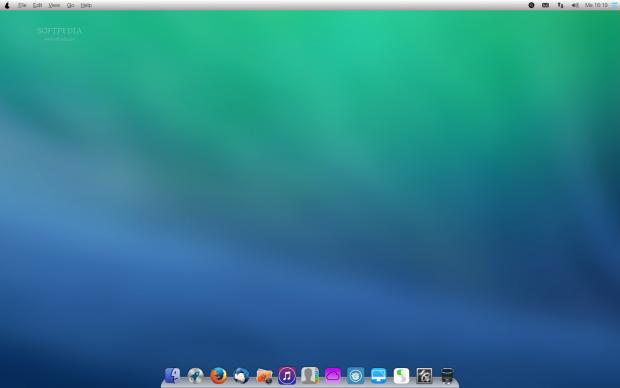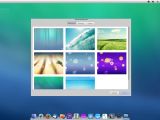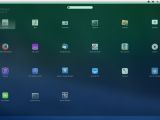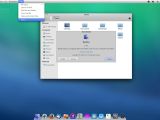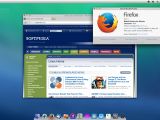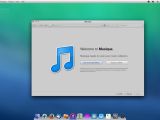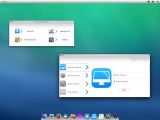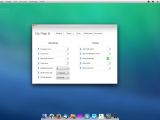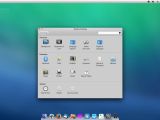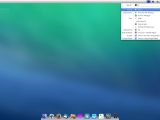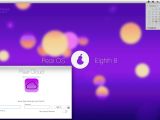Pear OS is a Linux distribution developed and specifically built to resemble a Mac OS system, but despite this “flaw” it's a lot better than you would imagine. Let’s take a closer look at this look-alike and see if it has what it takes to be its own operating system.
There are two ways of looking at Pear OS. One is from the perspective of a user who has seen Mac OS X and knows the differences and weak points of the distribution, but can also appreciate some of novelties that Linux has to offer.
The second way of looking at Pear OS is from the perspective of a user who has never seen Mac OS X or at least has never used it. This would mean that Pear OS would provide a unique experience, if we compare it with the rest of the major Linux distributions out there.
I would have to assume that most Linux users and readers haven't had the opportunity to try Mac OS X and therefore have no idea what the elements copied from Apple are. Make no mistake about it, a lot of them are lifted, from a design point of view, straight from the Mac OS X desktop, as much as the Linux technology allows.
Don't get me wrong, this is not a bad thing. The Pear OS developers have actually managed to shows us that something is actually done wrong in Linux and that other features that already existed could be a lot better.
Installation
Pear OS is based on Ubuntu 13.10 and it uses the same installer, with a few small modifications. If you ever installed an Ubuntu system, then you will have no problem installing Pear OS. The installation wizard is straight forward and it's hard to make any mistakes.
Usage
Right from the get-go, you will find out that Pear OS comes with some features already installed. I call them features because Ubuntu needs them and Pear OS has them by default.
The first thing you have to do after installing Ubuntu is to get the ubuntu-restricted-package from the repository. This will install a few things like codecs, Flash, and fonts that can't be provided by default in the operating system due to conflicts with the license. Users can install them afterwards, but Canonical can't bundle them.
Pear OS doesn't seem to have this problem. The ubuntu-restricted-extras package is already installed and there is no need to download it. This means that Flash support is provided out of the box.
The other important application I have to mention is called Synaptic. This is a package manager that used to be included by default in Ubuntu installations, but it was removed. It's still available in the repositories, but you need to get it. On Pear OS is installed by default, making the job of the users a lot easier.
The first thing users are going to notice is the desktop environment, which closely resembles Mac OS X. It follows the same layout and rules, starting with the Dock, which is called Plank.
It was originally developed for elementary OS as a simple dock solution to host the favorite software of the users, but in this case it looks and acts just like the one on Mac OS.
You will also see that there are a number of unique applications that are only used on Pear OS and that are specifically designed for it, such as Pear Contacts, Pear Cloud, Pear PPA Manager, and MyPear6.
If the first ones have obvious functionalities, the last two are actually quite interesting and show us how Ubuntu could be improved with something similar.
Many developers provide their latest applications in PPAs, which are basically smaller repositories. There are a few ways of adding PPAs in Ubuntu and my favorite way is through the terminal, but the Pear PPA Manager does it in style. It's simple and elegant and I would like to see it (or something similar) in Ubuntu distributions.
MyPear6 is a configuration utility for some of the visual aspects of the distribution. On Ubuntu you need a lot of applications to manage these kinds of options, including compiz-config, but in Pear OS this is done with this utility. It's not complete and it lacks a few options, but it's a very handy tool.
Another application that you will find docked by default is called Lauchpad, but it has nothing to do with Ubuntu's Launchpad. It's actually a start screen with all the applications installed and displayed just like in the default GNOME 3.
The top bar holds the indicators and the menus of the applications, which is also pretty similar with the one found on Mac OS X. The novelty is provided by two very useful indicators that offer a couple of much-needed functionalities.
The first in line is an application launcher and finder, marked with a looking glass icon, called indicator-synapse. With this tool, you can find any application on the system and launch it without any problem.
The last indicator is marked by three lines. This is where all the system notifications are displayed, at least the ones provided with the help of libnotify. It's still not a complete solution, but I find to be invaluable. Similar solutions are implemented in other desktop environments.
The Good
Also, the unique look of the OS, if we forget that it's Mac OS inspired, is also quite attractive and provides a fresh experience, quite different from anything GNOME, KDE, and Unity are offering.
The Bad
Also, the find and launch indicator sometimes closes before you can get to click on the item you searched for. It's a little too sensitive to mouse movements and you have to be careful when selecting the item.
The last thing I will mention is the fact that the notification and calendar indicators are not closing when the user clicks somewhere else on the desktop. You need to click on them again to close them.
 14 DAY TRIAL //
14 DAY TRIAL // 
